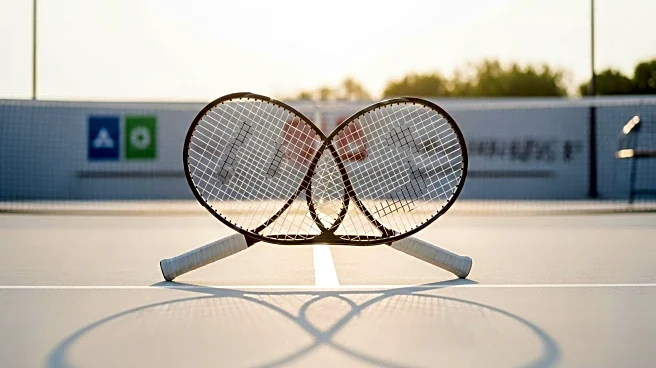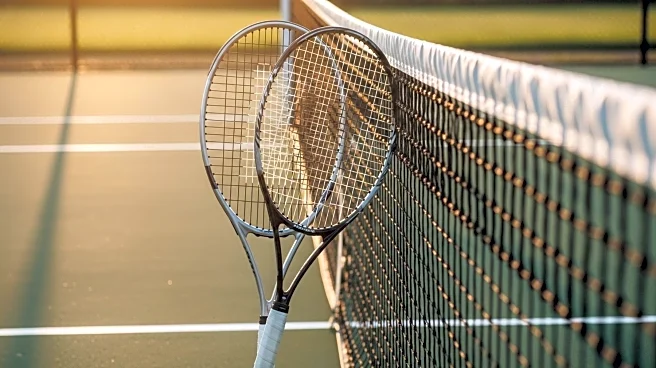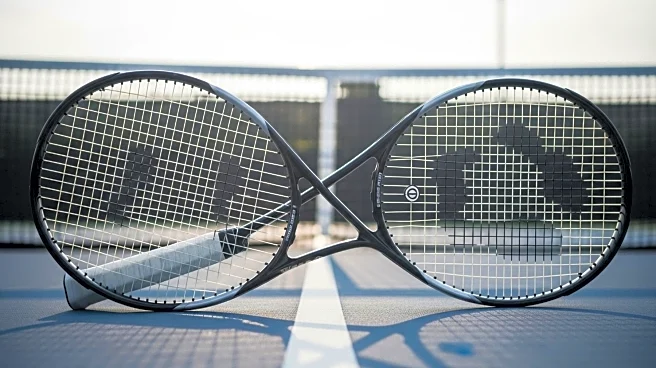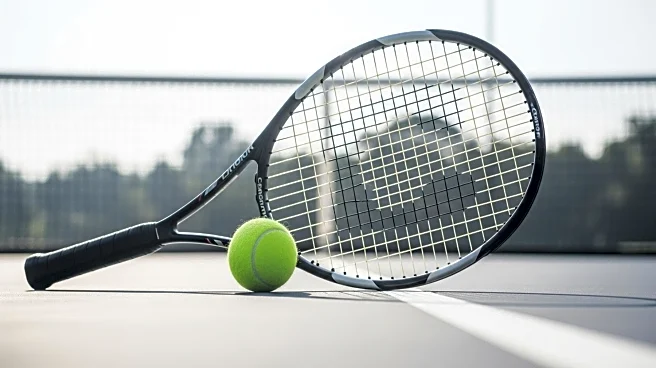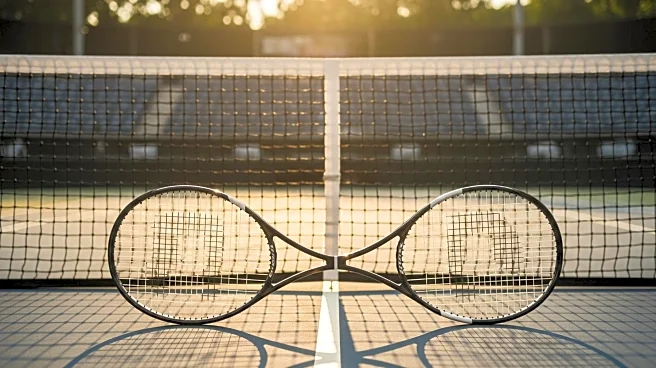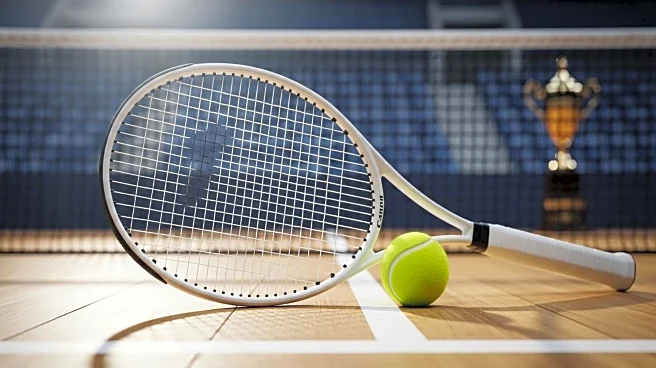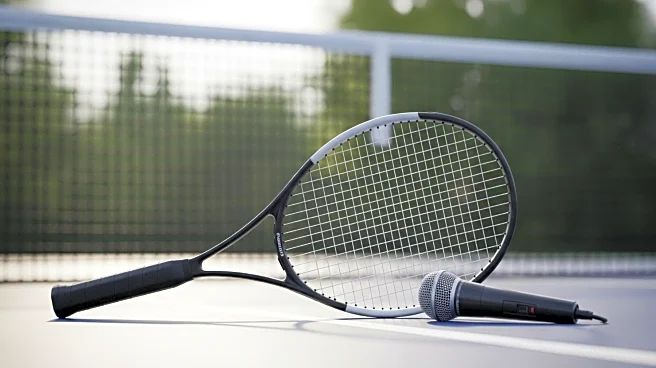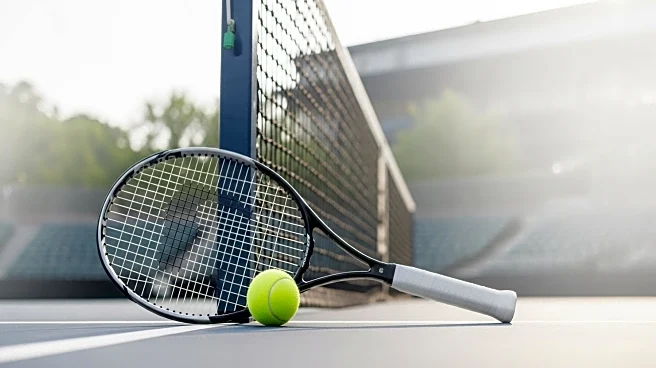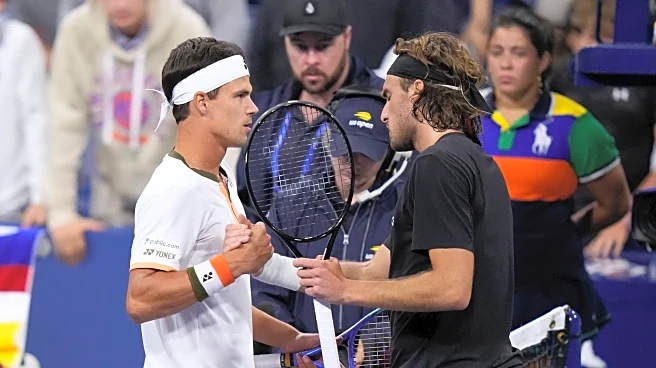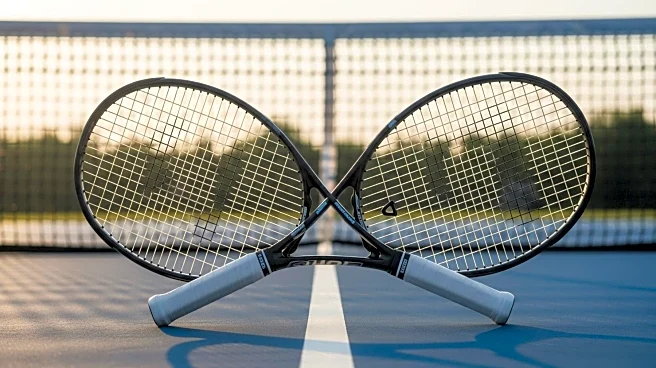What's Happening?
During the first week of the U.S. Open, attention has been drawn to the unwritten rules of tennis, particularly the postmatch handshake ritual. This tradition, although not explicitly mentioned in the Grand Slam rule book, is a deeply ingrained part of tennis culture, symbolizing sportsmanship. However, recent incidents have highlighted tensions that can arise during these exchanges. Jelena Ostapenko and Taylor Townsend had a verbal altercation after their match, with Ostapenko criticizing Townsend for not apologizing after a ball hit the net tape and for starting their warmup with volleys instead of groundstrokes. Similarly, Stefanos Tsitsipas expressed displeasure to Daniel Altmaier over an underarm serve, leading Altmaier to turn his back on Tsitsipas. These incidents underscore the complexities of maintaining civility in competitive sports.
Why It's Important?
The significance of these incidents lies in their impact on the perception of sportsmanship in tennis. The handshake is a symbolic gesture of respect and civility, and when it goes awry, it can reflect broader tensions within the sport. Such moments can influence public opinion and the image of tennis players, affecting their reputations and potentially their marketability. Moreover, these exchanges can highlight cultural differences and personal rivalries, which are intrinsic to international sports competitions. Understanding these dynamics is crucial for stakeholders, including players, coaches, and organizers, as they navigate the challenges of maintaining decorum in high-pressure environments.
What's Next?
As the U.S. Open progresses, players and officials may seek to address these tensions by reinforcing the importance of sportsmanship and respect. Discussions could arise about whether additional guidelines or education on postmatch conduct are necessary. Players might also reflect on their behavior and consider resolving conflicts privately, as suggested by some, rather than in public view. The ongoing dialogue about sportsmanship could lead to initiatives aimed at fostering a more respectful and harmonious competitive environment.
Beyond the Headlines
The incidents at the U.S. Open also raise questions about the role of social media in amplifying tensions. With platforms chronicling every handshake, players are under increased scrutiny, which can exacerbate conflicts. This phenomenon highlights the intersection of sports and digital culture, where public perception can be shaped by online narratives. Additionally, these moments can serve as a reminder of the diverse backgrounds and personalities in tennis, emphasizing the need for empathy and understanding across cultural lines.
